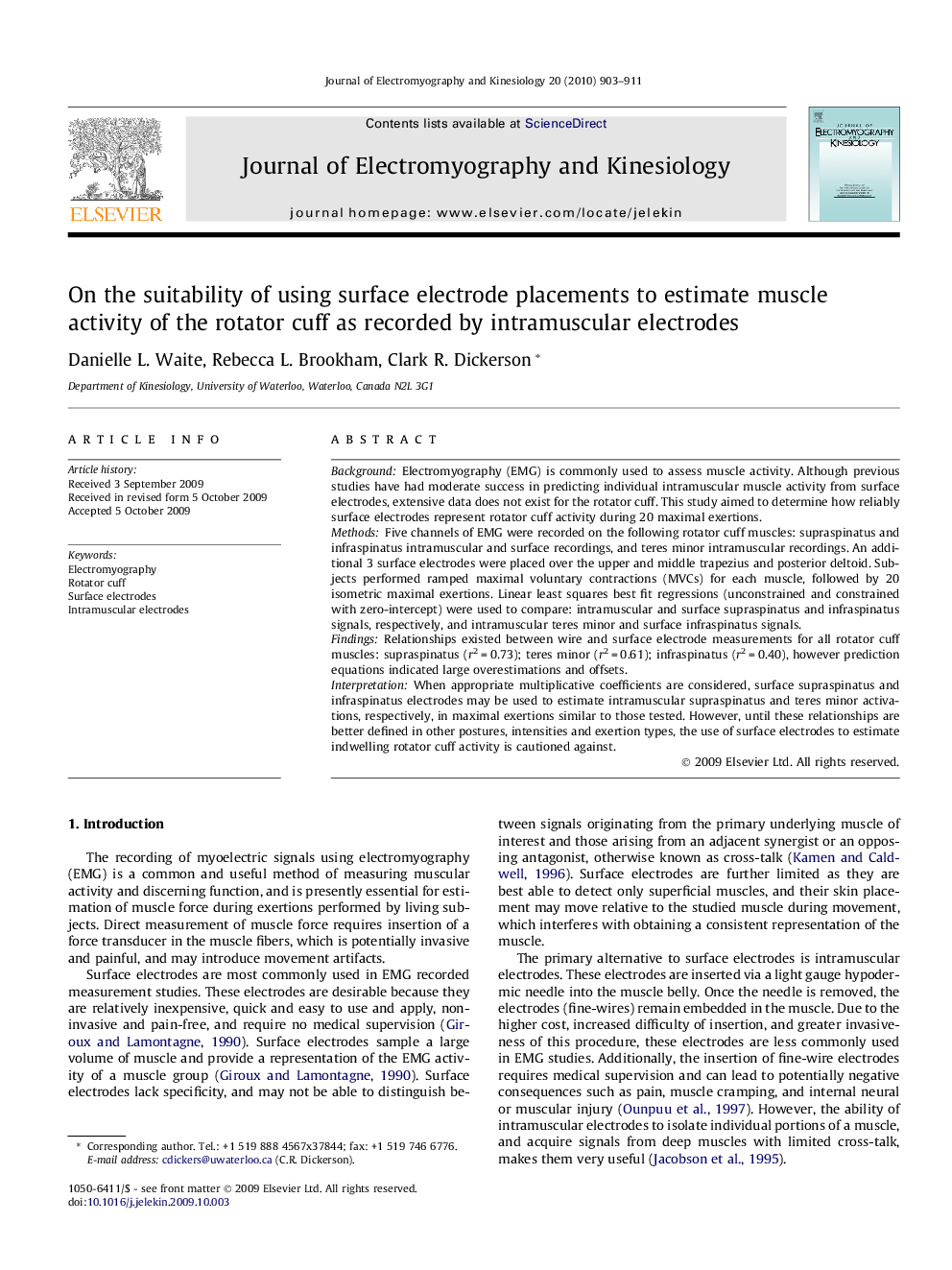| کد مقاله | کد نشریه | سال انتشار | مقاله انگلیسی | نسخه تمام متن |
|---|---|---|---|---|
| 4065133 | 1266241 | 2010 | 9 صفحه PDF | دانلود رایگان |

BackgroundElectromyography (EMG) is commonly used to assess muscle activity. Although previous studies have had moderate success in predicting individual intramuscular muscle activity from surface electrodes, extensive data does not exist for the rotator cuff. This study aimed to determine how reliably surface electrodes represent rotator cuff activity during 20 maximal exertions.MethodsFive channels of EMG were recorded on the following rotator cuff muscles: supraspinatus and infraspinatus intramuscular and surface recordings, and teres minor intramuscular recordings. An additional 3 surface electrodes were placed over the upper and middle trapezius and posterior deltoid. Subjects performed ramped maximal voluntary contractions (MVCs) for each muscle, followed by 20 isometric maximal exertions. Linear least squares best fit regressions (unconstrained and constrained with zero-intercept) were used to compare: intramuscular and surface supraspinatus and infraspinatus signals, respectively, and intramuscular teres minor and surface infraspinatus signals.FindingsRelationships existed between wire and surface electrode measurements for all rotator cuff muscles: supraspinatus (r2 = 0.73); teres minor (r2 = 0.61); infraspinatus (r2 = 0.40), however prediction equations indicated large overestimations and offsets.InterpretationWhen appropriate multiplicative coefficients are considered, surface supraspinatus and infraspinatus electrodes may be used to estimate intramuscular supraspinatus and teres minor activations, respectively, in maximal exertions similar to those tested. However, until these relationships are better defined in other postures, intensities and exertion types, the use of surface electrodes to estimate indwelling rotator cuff activity is cautioned against.
Journal: Journal of Electromyography and Kinesiology - Volume 20, Issue 5, October 2010, Pages 903–911